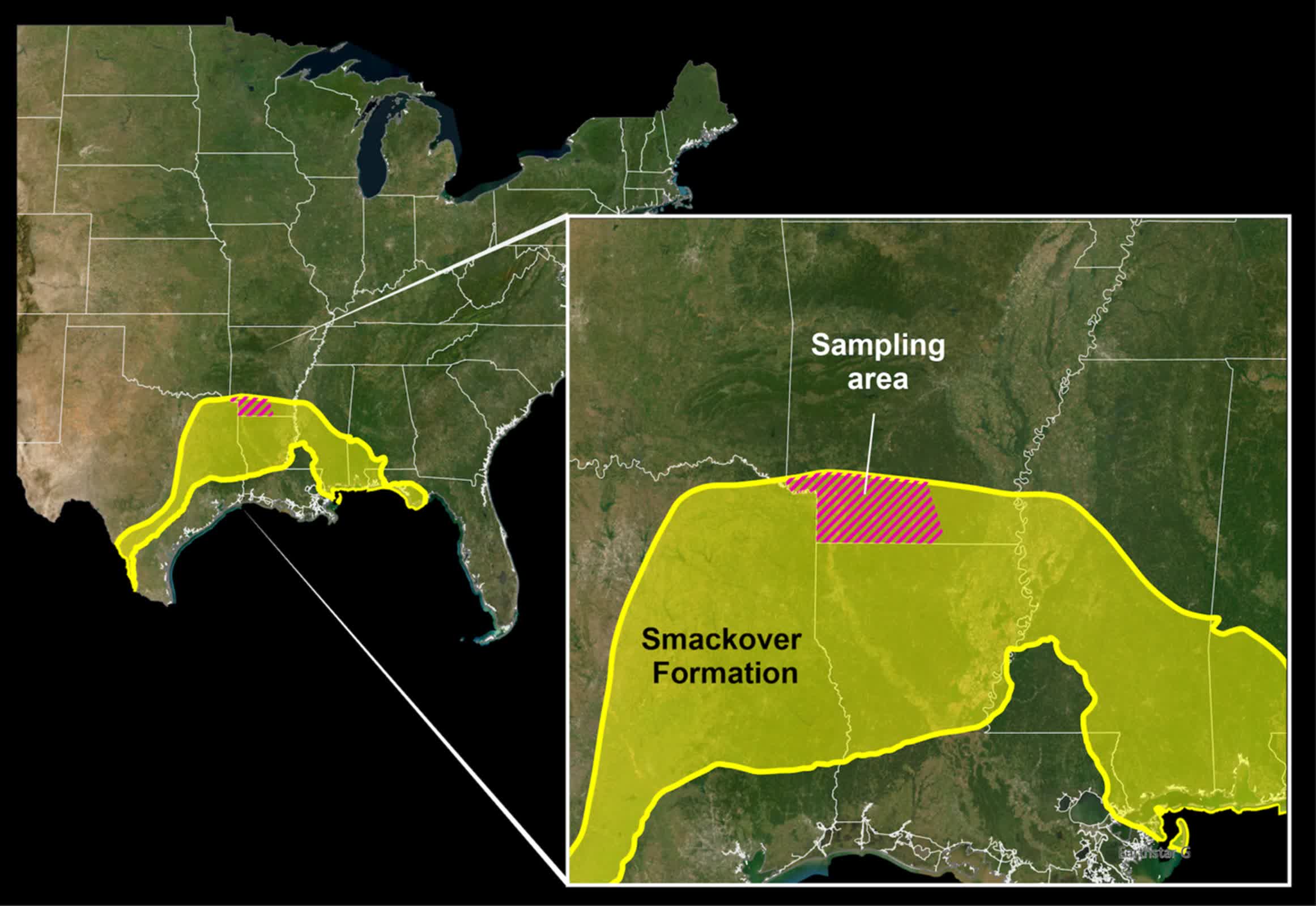Why it matters: As the world continues its shift toward cleaner energy sources, a discovery of a massive lithium deposit in Arkansas could play a pivotal role in shaping the future of transportation and energy storage. But challenges in its extraction and production must first be addressed.
Researchers have uncovered an enormous lithium deposit in southwestern Arkansas – a discovery that has the potential to remake the electric vehicle industry and bolster the US' position in the clean energy race.
A joint study led by the US Geological Survey (USGS) and the Arkansas Department of Energy and Environment's Office of the State Geologist found an estimated 5 to 19 million tons of lithium reserves beneath the state. It is a staggering amount that could meet the projected 2030 world demand for lithium in car batteries nine times over.
The lithium reserves are located in the Smackover Formation, a remnant of an ancient sea that stretches across several southern states. This porous limestone geological unit, dating back to the Jurassic period, is already known for its oil and bromine deposits and is now poised to become a key player in the lithium market.
To quantify the lithium present in the Smackover Formation's brines, the USGS-led team combined water testing, machine learning algorithms, and analysis of historic samples from the USGS Produced Waters Database. The resulting data allowed researchers to create predictive maps of lithium concentrations across the region, even in areas lacking direct lithium samples.
Lithium is essential for battery production, particularly in electric vehicles, and the demand for lithium has skyrocketed in recent years. The United States currently relies on imports for more than 25 percent of its lithium needs.
"Lithium is a critical mineral for the energy transition, and the potential for increased US production to replace imports has implications for employment, manufacturing and supply-chain resilience," said USGS Director David Applegate.

If commercially recoverable, the lithium reserves in Arkansas could have far-reaching implications. However, extracting lithium from the Smackover Formation will be challenging. The lithium is dissolved in brines associated with deep salt deposits, which complicates extraction processes. Katherine Knierim, the study's principal researcher, cautioned that while estimates represent total lithium present, further research is needed to determine how much is technically recoverable using newer extraction methods.
One logical solution may be to use waste streams from existing oil and gas operations, which already pump large volumes of brine from underground reservoirs. This brine often contains dissolved lithium.
By tapping into these waste streams, oil and gas companies don't have to carry out additional drilling and can use existing infrastructure such as wells, pipelines, and processing facilities.
Several companies, including Exxon Mobil, are already developing projects in Arkansas to produce lithium using Direct Lithium Extraction (DLE) technology. DLE technologies can selectively extract lithium ions directly from the waste streams, bypassing the need for evaporation ponds. The process is significantly faster than traditional methods, reducing extraction time from months or years to just weeks.
The success of lithium production in Arkansas hinges on companies' capacity to expand and refine the extraction techniques from brine. Unfortunately, DLE involves higher expenses compared to traditional approaches, according to the consulting firm Wood Mackenzie.
Exxon Mobil is now evaluating whether it could extract lithium in a cost-competitive way, Dan Ammann, the president of the company's Low Carbon Solutions business, told the New York Times.
"We know we have an attractive resource. We're working on understanding that cost equation, understanding the supply-and-demand picture."
